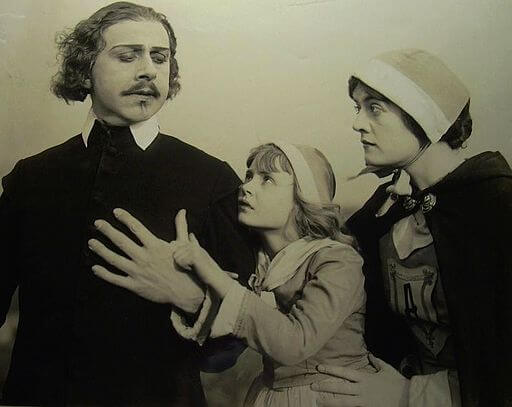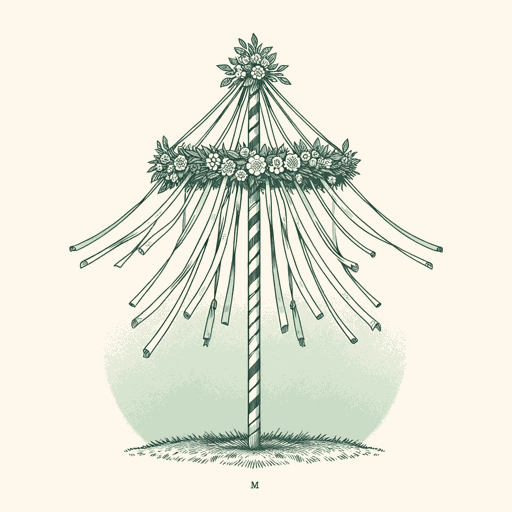'The Scarlet Letter' Questions for Discussion
- M.A., English Literature, California State University - Sacramento
- B.A., English, California State University - Sacramento
The Scarlet Letter is a seminal work of American literature written by New Englander Nathaniel Hawthorne and published in 1850. It tells the story of Hester Prynne , a seamstress newly arrived in the New World from England, whose husband, Roger Chillingworth, is presumed dead. She and local pastor Arthur Dimmesdale have a romantic interlude, and Hester gives birth to their daughter, Pearl. Hester is convicted of adultery, a serious crime in the time period of the book, and sentenced to wear the scarlet letter "A" on her clothing for the rest of her life.
Hawthorne wrote The Scarlet Letter more than a century after the events in the novel would have occurred, but it is not difficult to discern his contempt for Boston's Puritans and their rigid religious views. Thinking through some key passages and the questions below will help deepen your understanding of the book.

Questions for Discussion
Consider the following questions as you learn about The Scarlet Letter . Whether you're studying for an exam or leading a book club, these discussion questions will strengthen your understanding of the novel.
- What is significant about the novel's title?
- The Scarlet Letter is considered a romance by many literary scholars. Do you think that is an accurate categorization? Why or why not?
- Is Hester Prynne an admirable character? Why or why not?
- How does Hester evolve through the course of the story?
- How do we learn the true character of Roger Chillingworth? Is he believable as a villain?
- Is Arthur Dimmesdale an admirable character? How would you describe him and his relationship with Hester?
- What does Pearl symbolize? How is her name significant?
- What is the significance of Pearl not recognizing Hester without her scarlet 'A'?
- What is the moral statement Hawthorne is making throughout The Scarlet Letter?
- Do you agree with what how Hawthorne interprets the shortcomings of Puritan society?
- What are some symbols in The Scarlet Letter ? How do they relate to the plot and characters?
- Does the story end the way you expected? What's significant about the novel's ending?
- Would you consider The Scarlet Letter to be a work of feminist literature? Why or why not?
- How essential are the settings, both geographical and temporal, to the story? Could the story have taken place anywhere else or in any other time period?
- Does this novel give you a better appreciation for how women were treated in early New England ? Does it give you a new perspective on other events from the region's history, such as the Salem Witch Trials?
- 'The Scarlet Letter' Overview
- 'The Scarlet Letter' Characters
- 'The Scarlet Letter' Plot Summary
- Romantic Period Fiction - American Literature
- Controversial and Banned Books
- 10 Classic Novels for Teens
- Top Conservative Novels
- 50 General Book Club Questions for Study and Discussion
- 'The Scarlet Letter' Themes and Symbols
- 'The Scarlet Letter' Quotes Explained
- 'A Passage to India' Questions for Study and Discussion
- 'My Last Duchess' Questions for Study and Discussion
- Reading Comprehension Checklist and Questions for Students
- 'The Scarlet Letter' Vocabulary
- The Most Commonly Read Books in High School
- 'The Gift of the Magi' Questions for Study and Discussion

The Scarlet Letter - Study Guide
Nathaniel Hawthorne 's masterwork, The Scarlet Letter (1850) is considered one of the best novels of all time, and an exemplar of Dark Romanticism. Our study guide offers teachers and students important background about the author, particularly his own experiences at The Custom-House, where he learned to "stick it to the man" and inspired his writing of Hester Prynne's story. Don't skip the Introduction !
Read the book: The Scarlet Letter , Character Analysis & Summary , Genre & Themes , Symbolism & Literary Devices , Historical Context , Quotes , Discussion Questions , Paired Readings , Useful Links , and Notes/Teacher Comments

Character Analysis & Summary
Character analysis.
Hester Prynne - The woman who committed adultery with a pastor and bore an illegitimate child. She is sentenced to wear a letter "A" on her chest as her badge of public shame in this small Puritan community in which she seeks repentance and dignity.
Arthur Dimmesdale - The town's pastor with whom Hester had an adulterous affair, impregnating her out of wedlock. He does not confess to his guilt, and grows sick by his tormented conscience. Finally, he confesses in public and dies in Hester's arms.
Pearl - The "elf child" borne out of wedlock whom her mother Hester raises, but her father Arthur keeps his paternity a secret. Pearl becomes unruly and capricious as she is raised by Hester in a cabin on the edge of town.
Long-lost Husband - The small misshapen man who was Hester's husband, presumed to be lost at sea. She spots him in the crowd at her sentencing on the public scaffold (stocks). He changes his name to Roger Chillingworth and embarks on a mission to reveal the identity of Hester's adulterous partner. Hester refuses to name her lover, he threatens Hester to never reveal his identify as her husband. He finally suspects Dimmesdale is the father of Pearl, but Dimmesdale dies before Chillingworth gets his revenge.
Reverend John Wilson - A church leader who attempts to get Hester to confess her lover's identity, along with the town's minister denying his sin, Arthur Dimmesdale.
Governor Bellingham - Governor of the Bay Colony, he listens to the ministers and grants Hester's appeal to retain custody of her daughter.
Plot Summary
The story, subtitled "A Romance," is set in the Puritan town of Boston in the 17th century. It is about Hester Prynne, who conceived a child during a secret affair with a pastor, Arthur Dimmsedale, and is charged with adultery. After refusing to name her lover after repeated pressures from everyone (including Dimmesdale, who is covering up his sin), she is sentenced to wear a scarlet "A" (A for adultress) after standing three hours on the public scaffold in quiet dignity. Her long-lost husband appears at the sentencing, she refuses to reveal her lover, and he threatens to get revenge. After serving her prison sentence, Hester raises her daughter in a small cottage at the edge of town, church members threatens to take her away for being unruly, so Hester appeals to the ministers and Governor to let her stay. Meanwhile, Dimmesdale hides his guilt, but is consumed by sickness for years and eventually confesses to his sin. Chillingworth who suspected him, sees a symbol representing an "A" on Dimmsedale's chest. Hester and Dimmesdale meet secretly, she convinces him to leave Boston for Europe. After his best sermon ever delivering " a shower of golden truths upon them ," Dimmesdale climbs on the public scaffold to admit his sin, and dies in Hester's arms. Some witnesses swear they saw an "A" on his chest, but can't confirm it. When she dies, Hester is buried near Dimmesdale with the gravestone epitaph, "On a field, sable, the letter A, gules" (On a field, black, the letter A, red). Chillingworth gives up on revenge, dies, and leaves Pearl a large inheritance.
Readers are encouraged to study, rather than skip over the Preface to the Second Edition and The Custom-House , where Hawthorne reveals his sense of romance, between materialism and "dreaminess." He describes his experiences there, its crumbling systems of patronage, to provide a deeper understanding of the novel itself.

Genre & Themes
Hawthorne's story is in the genre of Romanticism, considered a masterpiece in the sub-genre of Dark Romanticism for its focus on sin, human fallibility, and the religious and societal institutions which enforce society's judgement and alienation of specific members of the community.
Primary Themes
- Sin, Evil, Guilt and Shame
- Purity and Corruption
- Fighting for Repentence and Dignity
- Darkness of Puritan Institutions - confusing the cause and nature of evil, denial of love, reinforcing alienation.
Morality Lessons
- Realism and Imagination (dreaminess) don't alway meet (Romance?)
- Fall from Grace to Eternal Damnation - Come forward to confess your guilt, or you'll get sick and die (Dimmesdale)
- The shaming by peers can be worse than the sentence for committing the crime
- Maintain quiet dignity and respect yourself, no matter what people think (Hester)
- Is redemption every possible? Once a Scarlet Letter, always a Scarlet Letter?
- "Be true! Be true! Be true! Show freely to the world, if not your worst, yet some trait whereby the worst may be inferred."

Symbolism & Biblical References
- The letter "A" which stands for "adulteress" is the symbol worn by Hester to represent her crime and ensuing public shaming; she refers to it as "some sweet moral blossom"
- Red is the color of the letter Hester wears, representing passion, blood and sin
- Rose Bush (also red) represents beauty, in sharp contrast to the red letter "A"
- "Black Man" is associated with Dimmesdale, Chillingworth, and little Pearl, the embodiment of evil.
Biblical References
- Hester is is the Latin form of Esther, a young Hebrew woman in The Bible, Book of Esther who married the Persian ruler Xerxes and risked her life to save her people. Puritans favored using Old Testament names.
- In Persian, Hester/Esther means "Star"
- Madonna and child (there is no acknowledged father, like for Pearl)
- Adam and Eve - They were both naked and "not ashamed" but their sin resulted in discovery of shame, explusion and extreme suffering by God after eating from the forbidden tree of knowledge
- Martyrs accept all sin on behalf of others (Hester never "outed" Dimmesdale's sin)
- Dimmesdale falls from grace to his own damnation
- Hester saw she could never take on this role advising other women, she was stained with sin and shame; the Prophetess must be lofty, pure, and beautiful to exhibit "the ethereal medium of joy" through sacred love.

Historical Context & The Custom-House
The story, written in 1850, is considered a work of Historical Fiction, set in Boston, the Puritan Bay Colony of Massachusetts between 1692 - 1699. Puritans left England for the New World to escape persecution and judgement in the hands of others in power. The strict religious convictions and social morays of the religion required conformity and cast judgement and punishment on anyone in their congregation who failed to conform to the Puritan ideals.
There were two types: "separating" Puritans, such as the Plymouth colonists, who believed that the Church of England was corrupt and that true Christians must separate themselves from it; and "non-separating" Puritans, such as the colonists who settled the Massachusetts Bay Colony, who believed in reform, but not separation. Most Massachusetts colonists were non-separating Puritans who wished to reform the established church, largely Congregationalists who believed in forming churches through voluntary compacts. Legacies of Puritanism include modern-day practicing Protestants which include Lutheran, Anglican, and Quaker denominations, and the so-called "Protestant work-ethic" which implies staunch focus of hard work and good deeds. Read more about Puritanism in New England

Hawthorne, and many other authors who embraced the genre of Dark Romanticism , cast judgement of their own on Puritans' treatment of sin, judgement, and human fallibility. Their stories often revealed the hypocrisy and dark side of these religious and cultural institutions to perpetuate, rather than eradicate, the sins they were trying so forcefully to admonish.
A note related to the significance of Salem's Custom-House. Both Hawthorne (as a young man) and Herman Melville (after his writing career tapered-off) took office jobs there. Operating in Salem since 1649, its business is collecting taxes on imported cargo, first for the British, then for the American Government. Starting in 1789, it housed the U.S. Customs Service and impounded cargo. Hawthorne's writing was significantly impacted by this experience, as he reveals in his introductory chapter. This is where he learned to "stick it to the man."

Explain what the following quotes mean and how they relate to the story:
"This Custom-House sketch has a certain propriety, of a kind always recognised in literature, as explaining how a large portion of the following pages came into my possession, and as offering proofs of the authenticity of a narrative therein contained. This, in fact,--a desire to put myself in my true position as editor, or very little more, of the most prolix among the tales that make up my volume,--this, and no other, is my true reason for assuming a personal relation with the public." The Custom-House
"Ah, but let her cover the mark as she will, the pang of it will be always in her heart." - Chpt. II
"'People say,' said another, 'that the Reverend Master Dimmesdale, her godly pastor, takes it very grievously to his heart that such a scandal has come upon his congregation.'" - Chpt. II
"He hath done a wild thing ere now, this pious Mr. Dimmesdale, in the hot passion of his heart!" - Chpt. X
"A pure hand needs no glove to cover it." - Chpt. XII
"It is to the credit of human nature, that, except where its selfishness is brought into play, it loves more readily than it hates. Hatred, by a gradual and quiet process, will even be transformed to love, unless the change be impeded by a continually new irritation of the original feeling of hostility." - Chpt. XIII
"She had wandered, without rule or guidance, into a moral wilderness. Her intellect and heart had their home, as it were, in desert places, where she roamed as freely as the wild Indian in his woods. The scarlet letter was her passport into regions where other women dared not tread. Shame, Despair, Solitude! These had been her teachers - stern and wild ones - and they had made her strong, but taught her much amiss." - Chpt. XVIII
She had not known the weight until she felt the freedom." - Chpt. XVIII
"No man for any considerable period can wear one face to himself and another to the multitude, without finally getting bewildered as to which may be the true." - Chpt. XX
"It was if an angel, in his passage to the skies, had shaken his bright wings over the people for an instant,--at once a shadow and a splendor,--and had shed down a shower of golden truths upon them." - Chpt. XXIII
Some speculated that: "the awful symbol was the effect of the ever active tooth of remorse, gnawing from the inmost heart outwardly, and at last manifesting Heaven's dreadful judgment by the visible presence of the letter." - Chpt. XXIV
"Be true! Be true! Be true! Show freely to the world, if not your worst, yet some trait whereby the worst may be inferred!" - Chpt. XXIV
"The angel and apostle of the coming revelation must be a woman, indeed, but lofty, pure, and beautiful; and wise, moreover, not through dusky grief, but the ethereal medium of joy; and showing how sacred love should make us happy, by the truest test of a life successful to such an end!" - Chpt. XXIV

Discussion Questions
1. What does the "A" represent? What does Hester mean when she says the letter is her "passport into regions where other women dared not tread" ?
3. Hawthorne's story is considered a parable, a simple story used to illustrate a moral or spiritual lesson. What's the lesson of this story?
4. Discuss the themes of sin and redemption, and Hawthorne's take-away lesson from this parable. Evil is found in plotted revenge of Chillingworth, not in Hester and Dimmesdale's love.
5. Does committing adultery with a "man of the cloth" constitute a worse crime than with a layman?
6. How is this story representative of Dark Romanticism ?
7. Why does Chillingworth (the long-lost husband) assume a new identity, and threaten Hester to never reveal he is her husband in this tight-knit Puritan culture?
8. Explain the Biblical references in the novel, including Adam and Eve eating from the tree of knowledge (good and evil), and the character's namesake, Esther in The Bible
9. Study the painting, The Scarlet Letter by Hugues Merle (1859), which Hawthorne considered the best visual representation of Hester Prynne's public disgrace and condemnation. Describe the artist's use of details, techniques and their affect (e.g., strong resemblance to Madonna and child, Hester's elderly husband is in the background).
9. Discuss Hawthorne's use of veils in his stories. He mentions a veil in his introduction, The Custom-House : " ...we may prate of the circumstances that lie around us, and even of ourself, but still keep the inmost Me behind its veil " and "...make its way through the veil of dim obstruction, and glimmer pleasantly upon our faces ." His story about a minister voluntarily adorning a veil to teach his parishioners a lesson about secret sin, The Minister's Black Veil . In its introduction, he tells of a clergyman who hid behind a black veil as self-imposed punishment for accidentally killing a friend. How does self-imposed shaming compare to Hester's public, imposed symbol of shame?
11. How does Hawthorne reveal himself as an author, an authentic "editor" to impart this story as it relates to The Custom-House. How does his experience relate to understanding the novel? Compare his description of an arcane, crumbling trading port and its aging patronage powers-that-be, with the arcane institutions in the novel.
12. Describe the significance of Hester's tombstone epitaph, "On a field, sable, the letter A, gules" (On a field, black, the letter A, red) . Is she marking herself for all eternity?
13. Speculate about the significance or symbolism of Hester naming her daughter "Pearl." What do you think her future holds after Hester's death?
Essay prompt #1 : Watch a movie: The Scarlet Letter was adapted a number of times (notably 1917 , 1926 , 1995 ). Pick a version, watch and compare it to the novel (comment on the historical or cultural context of the film's year you choose).
Essay prompt #2 : In modern culture, what does it take to earn a Scarlet Letter? Is social media our current method of social shaming, calling out those who have done wrong? Do you think public shaming can result in the person's reform?

Paired Reading Suggestions
Compare and contrast themes and literary elements in The Scarlet Letter with another story involving Puritans:
The Minister's Black Veil , the veil and the red "A" share a similar stigma of extreme social alienation, how are both "secret sin" ?
Lois The Witch ( Salem Trials of 1692 )
The Maypole of Merry Mount , both Puritans and Merry Mounter hippies are considered persecuted minorities in this story.
Extracts from Adam's Diary , a satirical twist of perspective on The Bible story about the first man who committed sin with Eve, and can't quite come clean.
Desiree's Baby , a white mother of a bi-racial child she's raising in the deep South.
Teachers : Challenge students to identify and compare other stories they've read with themes involving public ostracism, sin, and redemption.

Useful Links
Biography and Works by Nathaniel Hawthorne
Dark Romanticism Study Guide
The Scarlet Letter Themes, Motifs & Symbols
12 Popular Parables from the Bible
The Holy Bible
History of the Puritans in North America
Behind the Name Hester & the Protestant Reformation
The Minister's Black Veil Study Guide
The Custom-House, National Historic Site
20 Great American Short Stories
Short Stories for High School
Short Stories for Middle School

Notes/Teacher Comments
Visit our Teacher Resources for recommended works, supporting literacy instruction across all grade levels
American Literature's Study Guides


The Scarlet Letter
Nathaniel hawthorne, everything you need for every book you read..
Welcome to the LitCharts study guide on Nathaniel Hawthorne's The Scarlet Letter . Created by the original team behind SparkNotes, LitCharts are the world's best literature guides.
The Scarlet Letter: Introduction
The scarlet letter: plot summary, the scarlet letter: detailed summary & analysis, the scarlet letter: themes, the scarlet letter: quotes, the scarlet letter: characters, the scarlet letter: symbols, the scarlet letter: literary devices, the scarlet letter: quizzes, the scarlet letter: theme wheel, brief biography of nathaniel hawthorne.

Historical Context of The Scarlet Letter
Other books related to the scarlet letter.
- Full Title: The Scarlet Letter
- When Written: 1848-1850
- Where Written: Salem, Massachusetts
- When Published: 1850
- Literary Period: Transcendentalism
- Genre: Novel
- Setting: Boston, Massachusetts in the 1640s
- Climax: Dimmesdale's confession and death
- Antagonist: Roger Chillingworth; the Puritans
- Point of View: Third person omniscient

Extra Credit for The Scarlet Letter
Hawthorne and the Salem Witch Trials: Nathaniel Hawthorne was a direct descendent of John Hathorne, (1641-1717), a Puritan justice of the peace. Justice Hathorne is best known for his role as the lead judge in the Salem Witch Trials, in which he sentenced numerous innocent people to death for allegedly practicing witchcraft. Nathaniel added a "w" to his name to distance himself from his infamous ancestor.

- The Scarlet Letter
Nathaniel Hawthorne
- Literature Notes
- Essay Questions
- The Scarlet Letter at a Glance
- Book Summary
- About The Scarlet Letter
- Character List
- Summary and Analysis
- The Custom-House
- Character Analysis
- Hester Prynne
- Arthur Dimmesdale
- Roger Chillingworth
- Character Map
- Nathaniel Hawthorne Biography
- Critical Essays
- Symbolism in The Scarlet Letter
- The Puritan Setting of The Scarlet Letter
- The Scarlet Letter as a Gothic Romance
- The Structure of The Scarlet Letter
- Famous Quotes from The Scarlet Letter
- Film Versions of The Scarlet Letter
- Full Glossary for The Scarlet Letter
- Practice Projects
- Cite this Literature Note
Study Help Essay Questions
1. Justify Hawthorne's including The Custom House preface as part of the novel.
2. Discuss how Hawthorne uses the setting in Chapter 1 to set the mood for his story.
3. Discuss the function of the following minor characters: Mistress Hibbins, Governor Bellingham, and Mr. Wilson.
4. Explain the evolving or static nature of one of the main characters.
5. Justify the use of the last chapter, "Conclusion."
6. Discuss the conflict between the Puritan law and the laws of nature or human law.
7. Explain the significance of the three scaffold scenes.
8. Using Hawthorne's symbols, demonstrate how they change in the context of the novel.
9. How do their reactions to sin make significant contributions to the changes and futures of the main characters?
Previous Full Glossary for The Scarlet Letter
Next Practice Projects
The Scarlet Letter
By nathaniel hawthorne, the scarlet letter essay questions.
Is Hester truly penitent for her crime?
Answer: Though Hester regrets the effect her crime has had on her child and on her position in society, she sees Chillingworth's betrayal of Dimmesdale as an even greater crime. Ultimately, Hester learns to forgive herself for her sins while Dimmesdale does not.
Why does Dimmesdale intervene on Pearl's behalf when Governor Bellingham orders her removed from Hester's care?
Answer: There are two possibilities: either he fears Hester revealing his name or he truly believes that Hester deserves to care for her daughter, since he is emotionally connected to Pearl as her father and wants Hester to raise her. Ultimately, we believe that it is guilt which motivates him most, since he comes to Hester's defense only after she looks at him with imploring eyes.
What is the difference between how adultery is viewed now and how it was viewed by Puritan society? In other words, where does the blame lie?
Answer: In modern society, adultery is seen as a breach of contract between two people and therefore a private matter. In Puritan society, adultery was seen as a breach of contract between two people and the community in which they lived.
How is the Scarlet Letter embodied by Pearl?
Answer: Pearl, in her wild, unrepressed passion, represents the adulterous passion of her parents, as does the scarlet letter. In her society, she is completely out of place, a child of illicit passion and a constant reminder, like the scarlet letter, of that passion.
Why does Dimmesdale keep putting his hand over his heart?
Answer: Pearl asks this question repeatedly of her mother, but Hester will not answer her. Over time, we understand that Dimmesdale has literally and figuratively inscribed his own scarlet letter into the flesh above his heart so that he can commune with Hester's guilt, shame, and public excommunication.
Do people in the community believe Hester's punishment for adultery is too light or too strict?
Answer: For the most part, they believe it is too lenient, and some advocate branding her with a hot iron or death, the sentence associated with the crime of adultery both in the New England statutes of the time and in the Bible. As time progresses, however, they loosen slightly in their attitudes, though not as much as Hester would expect. Those who acknowledge their own sinfulness are somewhat less quick to judge Hester and can see the case for a less strict punishment by the community.
What are the purposes of the opening Custom-House essay?
Answer: The Custom-House introduction does more than increase the length of the novel, which Hawthorne thought was too short. It also adds a frame story and a romantic sense of truth or non-fiction to the tale. It introduces themes and imagery that will appear later in the novel. And it adds weight to the story by suggesting that the actual fabric of the scarlet letter continues to hold power.
Who is more racked by guilt, Hester or Dimmesdale?
Answer: Dimmesdale has sinned according to his own system of beliefs, since as the town minister he has violated the values he has preached against for decades. He takes his guilt to heart and suffers mightily. Hester, meanwhile, has come to terms with her sin over time.
What do Dimmesdale and Chillingworth share, other than Hester herself?
Answer: Both Dimmesdale and Chillingworth conceal their relationships to the adulterous act, leaving Hester as the only person to take public responsibility for the affair. They continue to maintain prominent roles in society. Both men are ultimately destroyed by this secrecy as they become entangled in a parasitic relationship.
Does Chillingworth ever forgive Hester?
Answer: Chillingworth seems forgiving of Hester at the outset, and he seems to transfer his rage onto Dimmesdale, whom he pursues relentlessly. Indeed, he seems to understand that he shouldn't have married a woman who would never love him, but Dimmesdale must be punished for allowing Hester to indulge her passion. His sinister acts toward the end of the novel are ameliorated somewhat by his choice to leave his estate to Pearl.

The Scarlet Letter Questions and Answers
The Question and Answer section for The Scarlet Letter is a great resource to ask questions, find answers, and discuss the novel.
Why does Dimmesdale decide to flee with Hester?
Dimmesdale looks beyong his place in the community and embraces his role as a father. He wants his family, so he decides to leave.
who is the elder clergyman who speaks to hester
The elder minister is John Wilson.
Who seems especially interested in the punishment that is about to take place?
That would be Roger Chillingworth.
Study Guide for The Scarlet Letter
The Scarlet Letter study guide contains a biography of Nathaniel Hawthorne, literature essays, a complete e-text, quiz questions, major themes, characters, and a full summary and analysis.
- About The Scarlet Letter
- The Scarlet Letter Summary
- The Scarlet Letter Video
- Character List
Essays for The Scarlet Letter
The Scarlet Letter essays are academic essays for citation. These papers were written primarily by students and provide critical analysis of The Scarlet Letter by Nathaniel Hawthorne.
- The Little Human A Incarnate
- Perception Blanketed by Passion
- Original Sin
- Hawthorne's "Witch-Baby" in The Scarlet Letter
- Hester's Role as Both the Sinner and Saint
Lesson Plan for The Scarlet Letter
- About the Author
- Study Objectives
- Common Core Standards
- Introduction to The Scarlet Letter
- Relationship to Other Books
- Bringing in Technology
- Notes to the Teacher
- Related Links
- The Scarlet Letter Bibliography
E-Text of The Scarlet Letter
The Scarlet Letter e-text contains the full text of The Scarlet Letter by Nathaniel Hawthorne.
- INTRODUCTORY. THE CUSTOM-HOUSE
- CHAPTER I. THE PRISON-DOOR
- CHAPTER II. THE MARKET-PLACE
- CHAPTER III. THE RECOGNITION
- CHAPTER IV. THE INTERVIEW
Wikipedia Entries for The Scarlet Letter
- Introduction
- Major theme
- Publication history
- Critical response
The Scarlet Letter

106 pages • 3 hours read
A modern alternative to SparkNotes and CliffsNotes, SuperSummary offers high-quality Study Guides with detailed chapter summaries and analysis of major themes, characters, and more. For select classroom titles, we also provide Teaching Guides with discussion and quiz questions to prompt student engagement.
Chapter Summaries & Analyses
Introduction
Chapters 1-4
Chapters 5-8
Chapters 9-12
Chapters 13-16
Chapters 17-20
Chapters 21-24
Character Analysis
Symbols & Motifs
Important Quotes
Essay Topics
Discussion Questions
Summary and Study Guide
The Scarlet Letter is an 1850 novel by writer Nathaniel Hawthorne. The work, Hawthorne’s first full-length novel, is a classic of the American Romantic era. More specifically, its treatment of topics like sin, insanity, and the occult make it a work of Dark Romanticism—a movement related to the Gothic genre that includes works by Edgar Allan Poe and Herman Melville. The Scarlet Letter is also a piece of historical fiction; it is set in the early days of the Massachusetts Bay Colony and refers to real historical figures like Governor Richard Bellingham and Reverend John Wilson . This study guide references the 2003 Penguin Classics edition of the work.
Plot Summary
Get access to this full Study Guide and much more!
- 7,350+ In-Depth Study Guides
- 4,950+ Quick-Read Plot Summaries
- Downloadable PDFs
In the Introduction, Hawthorne describes how he came to write The Scarlet Letter . While working at the Salem Custom House—a job he found unbearably dull—he claims to have found some old papers about a woman named Hester Prynne , along with an embroidered letter A. This captured Hawthorne’s imagination and, after losing his job at the Custom House, he set out to write a novel based on his discovery.
The narrative proper opens outside a prison in mid-17th-century Salem, Massachusetts. A young woman named Hester emerges from the town jail carrying her infant daughter, then passes through the assembled crowd to a scaffold. She wears a red letter A that marks her as an adulteress, which she will be required to wear for the rest of her life.
The SuperSummary difference
- 8x more resources than SparkNotes and CliffsNotes combined
- Study Guides you won ' t find anywhere else
- 100+ new titles every month
While atop the scaffold , Hester is alarmed to notice her husband in the crowd. The man, who now calls himself Roger Chillingworth , spent the last year as the prisoner of a Native American tribe and is familiar with both Western and indigenous medicine. Under the guise of tending to Hester and the baby, he visits her in her prison cell the same evening, assuring her of his forgiveness but asking that she keep his identity a secret. Hester agrees.
For the next couple of years Hester makes her living as a seamstress while raising her daughter Pearl. Pearl is a flighty, intelligent, and mischievous child, and Hester at one point must beg Governor Bellingham not to place her in another family’s care. Hester successfully retains custody of Pearl and over time begins to win a more favorable reputation for herself because of her various charitable works.
Meanwhile, Chillingworth has befriended and moved in with a young but sickly minister named Arthur Dimmesdale . He does so ostensibly to treat Dimmesdale’s illness, but as time goes by Chillingworth becomes increasingly convinced that Dimmesdale’s suffering stems from an undisclosed dark secret. One day while Dimmesdale is sleeping, Chillingworth glimpses something—later revealed to be a branded letter A—on the minister’s chest. Now certain that Dimmesdale was Hester’s lover, Chillingworth uses his knowledge to covertly torment the minister.
Wracked with guilt, Dimmesdale goes one night to the scaffold where Hester was punished. There he is joined by Hester and Pearl (now seven), who are returning home after keeping vigil in a sick house. As the three watch, a meteor lights the sky in a way reminiscent of a letter A. At almost the same moment they notice Chillingworth watching Dimmesdale with a vindictive expression. Noting Dimmesdale’s obvious terror, Hester later approaches Chillingworth on his behalf. She is unable to persuade Chillingworth to give up his vengeful schemes but warns him that she will tell Dimmesdale the truth about who he is.
Hester accordingly plans to meet Dimmesdale in the forest . Sending Pearl off to play, Hester tries to comfort and reassure Dimmesdale, eventually urging him to start a new life somewhere else. She promises to accompany him and tries to introduce him properly to Pearl, who rebuffs him.
Hester and Dimmesdale plan to sail for Bristol the day after Dimmesdale gives a sermon in honor of Election Day. While attending the festivities, however, Hester learns from the ship’s captain that Chillingworth has also booked passage. Before she can decide what to do, Dimmesdale emerges from the church. Seeing Hester, he asks her to help him up the scaffold, where he publicly proclaims his guilt and reveals the letter on his chest. He then dies in Hester and Pearl’s arms as Chillingworth watches furiously.
In an epilogue the narrator explains that Chillingworth himself died shortly after Dimmesdale, leaving his wealth to Pearl. She and Hester then traveled to Europe, where it’s assumed Pearl eventually married. Hester later returned to Salem, where she continued to wear the scarlet letter , and provided comfort and advice to those in need. She died as an old woman and was buried near Dimmesdale; they shared a headstone inscribed with the letter A.

Don't Miss Out!
Access Study Guide Now
Related Titles
By Nathaniel Hawthorne

Dr. Heidegger's Experiment
Nathaniel Hawthorne

Ethan Brand

My Kinsman Major Molineux

Rappaccini's Daughter

The Ambitious Guest

The Artist of the Beautiful

The Birthmark

The Blithedale Romance

The Hollow of the Three Hills

The House of the Seven Gables

The Marble Faun

The Maypole Of Merry Mount

The Minister's Black Veil

The Wives of the Dead

Young Goodman Brown
Featured Collections
Allegories of Modern Life
View Collection
American Literature
Audio Study Guides
Colonial America
Forgiveness
Romanticism / Romantic Period
The Scarlet Letter: Study Questions and Answers
- Trent Lorcher
- Categories : Literature study guides and chapter summaries
- Tags : Homework help & study guides
- Answer : At first it means adultery . Then it means able . Its meaning then becomes indefinite. It is eventually looked on as a symbol of strength. The townspeople regard it as an object of scorn. Hester regards it as a constant reminder of her sin. Outsiders see it as a novelty and some Native Americans presume it’s a distinguishing mark for someone of status. Pearl, in addition, is considered the embodiment of the letter, a constant agitator to Hester initially, and in the conclusion her benefactress who sends her gifts. In chapter 23, The Revelation of The Scarlet Letter, the Scarlet Letter becomes the mark on Dimmesdale’s chest.
- Answer: As the novel begins, Hester is scared and an object of public scorn. The letter along with her daughter help her bridle her passions and emotions to the point where she becomes hardened. Hester’s two reminders help her develop strength of character. She performs numerous acts of charity, but does so in isolation, receiving condemnation from the very souls she helps.
- The rosebush - The narrator provides several possible interpretations for the rosebush: the triumph of nature over man made contrivances, a foreshadowing of Hester’s blossoming under harsh Puritan rule, or the triumph of the individual against society, a common theme in American Romanticism .
- The meteor - Dimmesdale feels it symbolizes that he should wear the ‘A’ on his chest. The townspeople believe it means angel in honor of Governor Winthrop who had died. Individual experience plays a major role in the interpretation of symbols.
- Arthur Dimmesdale’s hypocrisy is trumped only by his allowing Hester to receive her punishment alone. Looked upon as the town’s most pious man, Dimmesdale hides a sin that destroys him.
- Hester Prynne hides Chillingworth’s true identity, allowing him to exact revenge on Dimmesdale.
- Roger Chillingworth violates “the sanctity of a human heart,” the worst sin of them all.
Use of Irony
- Verbal Irony - Dimmesdale refers to himself as the worst of sinners during his sermons. The congregation believes it to be a sign of humility. Dimmesdale, however, speaks literal truth.
- Situational Irony - The scarlet letter was meant as a punishment and an object of scorn. Over time, however, it becomes a badge of honor.
- Dramatic Irony - By the middle of the novel, we all know Dimmesdale is guilty of adultery. The townspeople think he’s the most holy man ever.
Feel free to add your own questions and answers by clicking on “comments” above.
This post is part of the series: The Scarlet Letter Study Guide
Avoid a scarlet ‘F’ with this Scarlet Letter study guide.
- Characters from The Scarlet Letter
- Chapter Summaries of The Scarlet Letter
- Understanding the Symbolism in The Scarlet Letter
- Important Quotations from The Scarlet Letter by Nathaniel Hawthorne
- The Scarlet Letter Study Guide: Practice Questions and Answers

IMAGES
VIDEO
COMMENTS
When Hester and Dimmesdale meet in the forest, she impulsively takes off the letter and throws it away. When Pearl sees her mother without the letter, she reacts by screaming and crying until Hester puts the letter back on. As Hester explains, "Pearl misses something which she has always seen me wear.".
The Scarlet Letter is a seminal work of American literature written by New Englander Nathaniel Hawthorne and published in 1850. It tells the story of Hester Prynne, a seamstress newly arrived in the New World from England, whose husband, Roger Chillingworth, is presumed dead. She and local pastor Arthur Dimmesdale have a romantic interlude, and ...
Teach and learn The Scarlet Letter with ideas from this resource guide, including discussion questions, character analysis, plot summary, genres, themes, historical context, symbolism, quotes, and paired reading suggestions for this exemplary Dark Romantic tale. Our goal is to help you help your students better understand AND ENJOY classic ...
The Scarlet Letter study guide contains a biography of Nathaniel Hawthorne, literature essays, a complete e-text, quiz questions, major themes, characters, and a full summary and analysis. ... The Scarlet Letter Questions and Answers. The Question and Answer section for The Scarlet Letter is a great resource to ask questions, find answers, ...
The Scarlet Letter paints a very unflattering portrait of the Puritans, a religious group that dominated late seventeenth-century English settlement in Massachusetts. Puritanism began in England during the reign of Queen Elizabeth (1558-1603). The name "Puritanism" came from the group's intent to purify the Church of England by making government and religious practice conform more closely to ...
He is incompetent. He spends too much time writing when he should be working. The other inspectors dislike him personally. A new customhouse president, who is of a different party than the narrator, is elected. Test your knowledge on all of The Scarlet Letter. Perfect prep for The Scarlet Letter quizzes and tests you might have in school.
The Scarlet Letter Questions and Answers - Discover the eNotes.com community of teachers, mentors and students just like you that can answer any question you might have on The Scarlet Letter
Thanks for exploring this SuperSummary Study Guide of "The Scarlet Letter" by Nathaniel Hawthorne. A modern alternative to SparkNotes and CliffsNotes, SuperSummary offers high-quality Study Guides with detailed chapter summaries and analysis of major themes, characters, and more. For select classroom titles, we also provide Teaching Guides with discussion and quiz questions to prompt ...
Study Help Essay Questions. 1. Justify Hawthorne's including The Custom House preface as part of the novel. 2. Discuss how Hawthorne uses the setting in Chapter 1 to set the mood for his story. 3. Discuss the function of the following minor characters: Mistress Hibbins, Governor Bellingham, and Mr. Wilson. 4.
Explain the tone of the opening chapter of the Scarlet Letter. It's dark, gloomy, sad, & melancholy. Explain why the women waiting to see Hester are more interested in her punishment than the men are. They believe Hester made all women look bad.
The Scarlet Letter study guide contains a biography of Nathaniel Hawthorne, literature essays, a complete e-text, quiz questions, major themes, characters, and a full summary and analysis. Best summary PDF, themes, and quotes.
The Scarlet Letter Study Questions. Chapter 1. 1. What is the setting of The Scarlet Letter? 2. Why does Hawthorne begin the story with a reflection about the need for a cemetery and a prison? 3. What is the significance of the wild rosebush that grows beside the prison door?
The Scarlet Letter focuses on four main characters: Hester Prynne, Pearl, Arthur Dimmesdale, and Roger Chillingworth. These questions review the Scarlet Letter, encouraging group participation and ...
2. What occupation did Hester take up? 3. Describe Hester's appearance and mental state during this time period. 4. Give at least three examples of Hester's treatment by the community. 5 ...
Only the student materials in this unit plan such as worksheets, study questions, assignment sheets, and tests may be reproduced multiple times for use in the purchaser's classroom. For any additional copyright questions, contact Teacher's Pet Publications. 410-641-3437. www.tpet.com.
English Exam 1. 54 terms. bostonchaulk. Preview. GCSE recall questions. 6 terms. Cindy0480. Preview. Study with Quizlet and memorize flashcards containing terms like What colony is the setting for the novel? (1), Where in the colony does the opening chapter take place? (1), For what 2 "practical necessities " dos the new colony set aside land?
Thanks for exploring this SuperSummary Study Guide of "The Scarlet Letter" by Nathaniel Hawthorne. A modern alternative to SparkNotes and CliffsNotes, SuperSummary offers high-quality Study Guides with detailed chapter summaries and analysis of major themes, characters, and more. For select classroom titles, we also provide Teaching Guides with discussion and quiz questions to prompt ...
The Scarlet Letter Study Questions. Tara received her MBA from Adams State University and is currently working on her DBA from California Southern University. She spent 11 years as a sales and ...
Identify and explain two other symbols in The Scarlet Letter . Answer: Other than those listed above, the rosebush at the prison door, and the meteor in chapter 12 are the novel's two most obvious symbols: The rosebush - The narrator provides several possible interpretations for the rosebush: the triumph of nature over man made contrivances ...
2. There was something ugly and evil in his face. It was widely held that he was the devil or the devil's agent come to persecute Dimmesdale. 3. Over the years Dimmesdale has taken to whipping ...
Pearl focuses on the need for Dimmesdale to openly acknowledge his lover and illegitimate daughter. Pearl's washing off of his kiss sets us up for her eventual acceptance of his kiss in the climatic scene of the novel. "The Scarlet Letter": Chapters 16-19 (Study Questions) 1.) Why does Hester prefer to meet with Dimmesdale in the forest rather ...
Course Summary. This Study Guide course helps you review the characters, events and interpretation of the novel ''The Scarlet Letter''. The video lessons are about five minutes long each and help ...